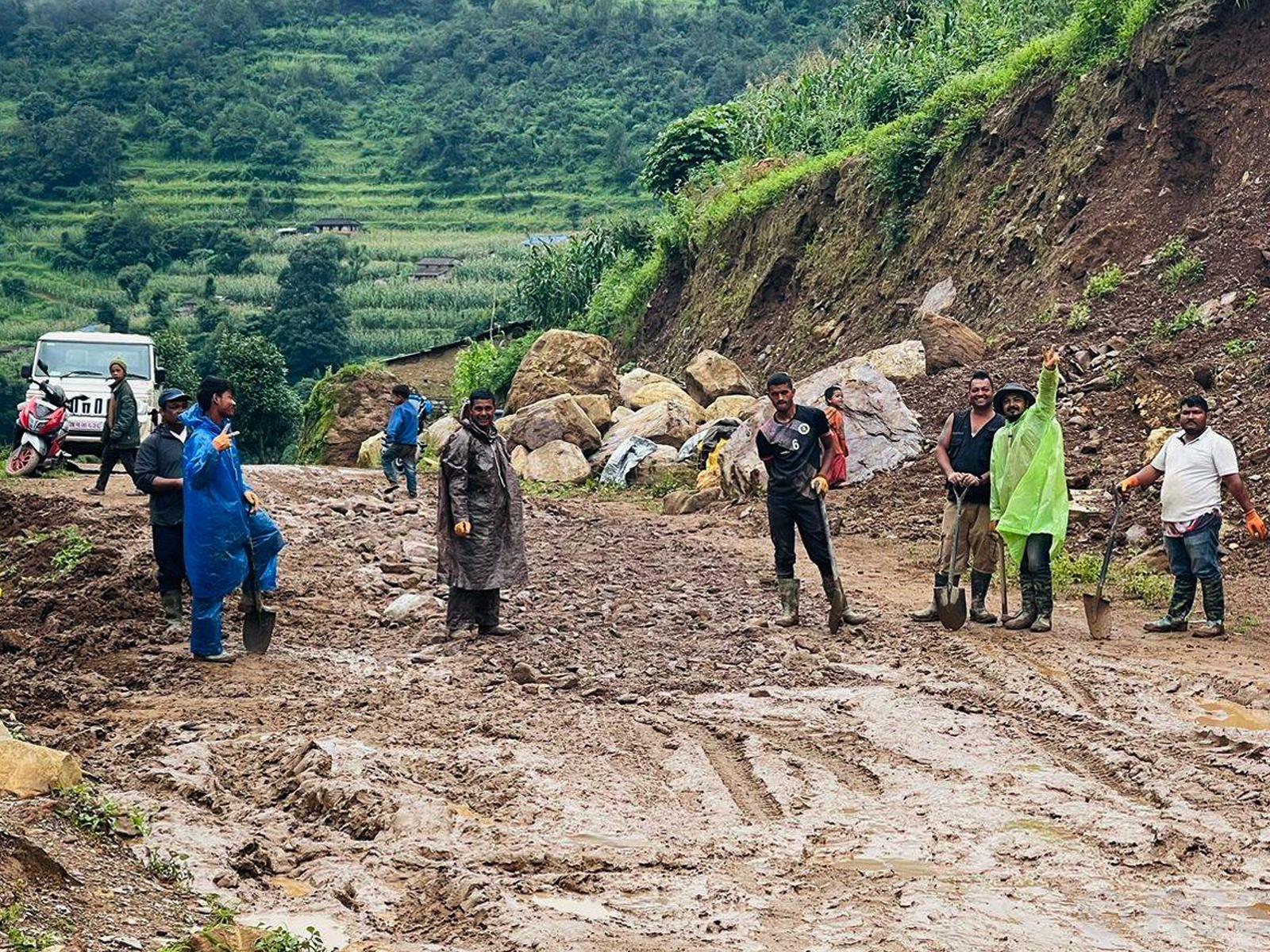Dhorpatan Hunting Reserve, Nepal’s only hunting reserve, witnesses a large religious fair every year on Janai Purnima, and this year is no exception. Devotees from across the country have started arriving at Dhorpatan to offer prayers at the Dhor Baraha Temple, with many having already reached the site since Saturday.
A decade ago, pilgrims would trek to Dhorpatan from Burtibang Bazaar, but with the construction of the Dhorpatan road in 2071 BS, most now travel by vehicle. The road connecting Dhorpatan is part of the national priority project, the ‘Saljhandi-Dhorpatan Road.’ Despite the road being opened a decade ago, the lack of upgrades has made the journey hazardous.
The 32-kilometer stretch from Burtibang to Dhorpatan Valley in Baglung has deteriorated significantly, especially with the influx of thousands of devotees during Janai Purnima. The poor condition of the road, coupled with heavy traffic, has forced pilgrims to endure challenging travel conditions. Many vehicles break down mid-journey, causing delays and difficulties for those trying to reach the sacred site. The Baglung section of the Saljhandi-Dhorpatan road spans approximately 61 kilometers, but no significant upgrades have been made so far.
Three years ago, a contract was awarded for the improvement of the 22-kilometer road from Burtibang to Falleghar, but due to the non-compliance of the construction company, the road remains in disrepair. In response to the anticipated influx of pilgrims and tourists, the Dhorpatan Municipality has deployed machinery and workers to fill potholes and make the road passable. Four years ago, the Bhujikhola flood caused significant damage to the road, and while some repairs have been made, vehicles continue to struggle on the rough terrain.
Deputy Mayor Dhan Bahadur Kayat (Kalyan) of Dhorpatan Municipality informed that, despite the road being under the federal government’s jurisdiction, the municipality has taken steps to make the road passable, especially for Janai Purnima. “This road is under the federal government, so the municipality cannot carry out significant work. We have, however, been clearing blockages and ensuring the road is operational with the help of machinery. The construction company was supposed to complete the work last year but failed to do so, causing inconvenience to tourists. We have made repairs at various points and stationed machinery on standby to ensure smooth passage for pilgrims.”
The poor road conditions, including deep potholes and large rocks, often leave tourists stranded with broken-down vehicles. Gun Bahadur Bik, a local from Dhorpatan Municipality-9, mentioned that the lack of nearby garages further frustrates travelers, many of whom have to return home disappointed. “The road has been in disrepair for years, and nothing has been done to fix it. During the dry season, vehicles can still manage, but during the monsoon, many vehicles break down, leaving tourists stranded. Dhorpatan is a beautiful place, but when people see the condition of the road, they think twice about returning,” he said. “There are also no good hotels along the road, so if a vehicle breaks down, finding accommodation is difficult. If the government does not take this road seriously and upgrade it, many people will suffer.”
The Saljhandi-Dhorpatan road, connecting the Terai and hilly regions, was first opened in 2071 BS. The Baglung section of the road, stretching 61 kilometers from Gangaare in Badigad to Dhorpatan, remains in poor condition despite a contract for its improvement being signed three years ago. The entire road from Saljhandi to Dhorpatan is 197 kilometers long, passing through various villages and challenging terrain.






